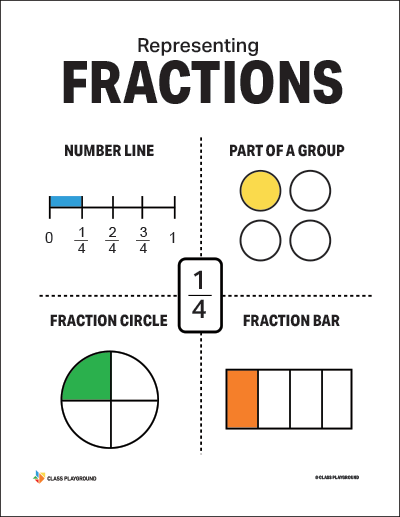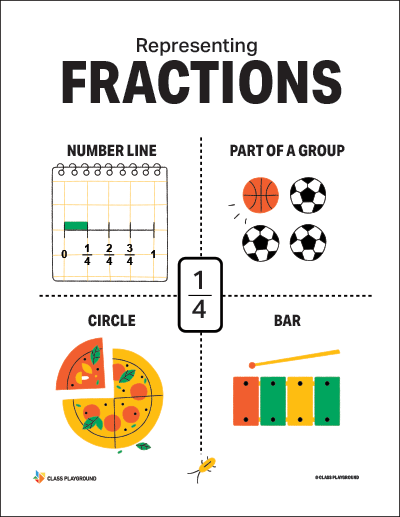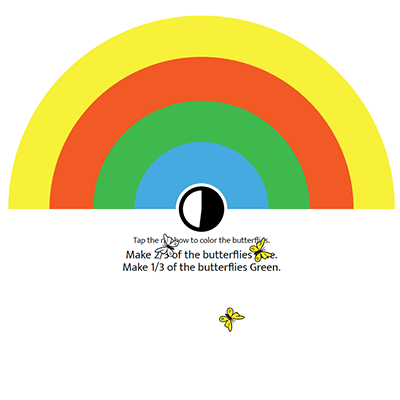What are Fractions?
Fractions are a way of representing parts of a whole. They consist of two numbers: the numerator, which represents the number of equal parts being considered, and the denominator, which signifies into how many equal parts the whole is divided.
Why Teach Fractions?
Understanding fractions is a vital part of elementary mathematics curriculum. Not only does it underpin many other math concepts such as decimals and percentages, but it also has practical applications in everyday life. Whether it’s dividing a pizza among friends or measuring ingredients for a recipe, we use fractions frequently in our day-to-day activities.
Strategies for Teaching Fractions
- Connect to Prior Knowledge: Start by linking fractions to students’ real-world experiences. For instance, you could ask students to consider how they would share a bar of chocolate or a pizza among friends. This will help them understand that fractions are used to represent a part of a whole, making the concept more relatable and easier to grasp.
- Understand the Denominator: Help students grasp that the denominator tells us into how many equal parts the whole is divided. For example, in the fraction 1/4, the denominator ‘4’ signifies that the whole has been divided into four equal parts. You can demonstrate this using visual aids like pie charts or divided rectangles.
- Use Visual Models: Incorporate visual models like paper folding exercises or tape diagrams to help students visualize fractions. For example, if you’re teaching the fraction 1/2, you could fold a piece of paper in half and shade one part to visually represent the fraction. Similarly, a tape diagram can be used to show how a whole is divided into equal parts.
- Hands-On Activities: Engage students in hands-on activities, like folding papers into halves, quarters, eighths, to provide a concrete understanding of fractions. These activities not only make learning fractions fun but also give students a tangible experience that enhances their understanding of the concept.
- Guided Instruction: Implement guided instruction, which involves breaking down the learning process into manageable chunks and guiding the students through each step. For instance, when teaching how to add fractions with different denominators, you could guide students through the steps of finding a common denominator, changing the numerators accordingly, and then adding the fractions.
Activities
- Fraction Art: In this activity, students create an artwork divided into equal parts to understand the concept of fractions. Students could draw a large circle, square, or any shape of their choice and divide it into equal parts, such as halves, quarters, or thirds. They can then color in each section with different colors. This visual representation helps students understand how a whole can be divided into equal parts and how each part represents a fraction of the whole.
- Bake and Learn: Baking provides a great opportunity to teach fractions in a real-world context. Recipes usually include measurements like half a cup of sugar or two-thirds a cup of milk. By measuring ingredients themselves, students can see fractions in action. This activity not only teaches fractions but also introduces students to basic cooking skills and the importance of precise measurements in achieving a successful result.
- Fraction Strips: This activity involves creating fraction strips using colored paper. Each strip should represent a whole, and students can fold the strips to show halves, quarters, thirds, etc. By comparing the folded strips, students can visually understand the relationship between different fractions and how they make up a whole. This is a tactile way of learning fractions, which can be particularly beneficial for kinesthetic learners.
- Fraction Walk: Organize a fraction walk around the school. During this walk, you can identify objects that can be divided into fractions, like a pizza in the cafeteria or a football field, and discuss what fractions of these wholes might look like. This activity helps students apply the concept of fractions to their everyday environment, reinforcing their understanding in a practical way.
- Story Problems: Create story problems involving fractions for students to solve. For example, if a character in the story has two apples and eats one and a half, how much is left? This activity helps students understand the real-world applications of fractions and encourages them to think critically about how to solve problems involving fractions.



